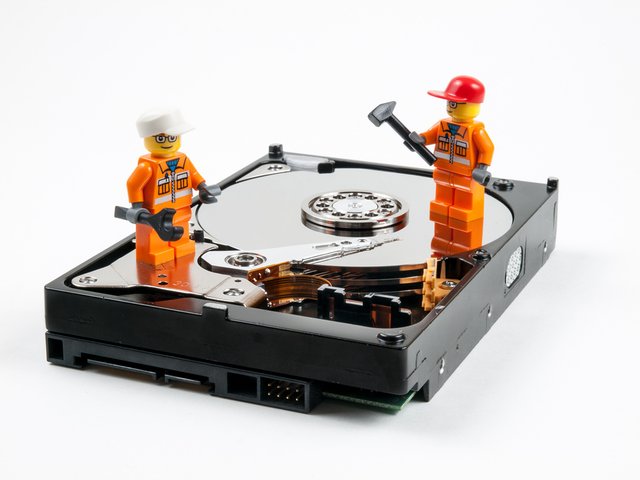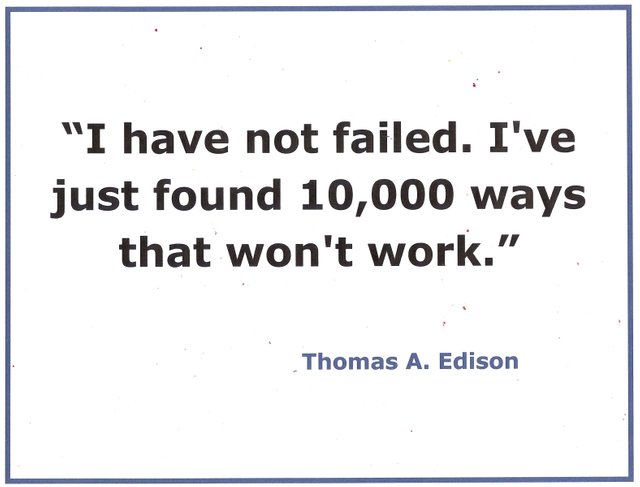Advice for Fixing a Damaged RAID-5 array
Preamble
This isn't a complete guide, more of a "things to be aware of before you run into this issue" sort of advice column. If you are looking to use RAID-5, this may be worth a read. If you've recently lost your RAID-5 array, and are looking to repair it, this guide is best used as a supplement to the many existing walkthroughs out there.
Image Source: https://www.flickr.com/photos/wwarby/11682625885Introduction
RAID arrays are touted as a great way to effortlessly backup your data on the fly, once you set them up. As long as they aren't strictly used for performance, such as RAID-0. The coolest sounding RAID array is RAID-5, which allows for 1 hard drive to fail in the presence of as many as you can plug in, despite only losing the equivalent of that drive's storage capacity (Due to the wonders of mathematics and the XOR operation). There is a darker side to RAID-5, however, which isn't commonly discussed.
The major pitfall of using RAID-5
While you feel safe that your data is secure from one of your hard drives failing, the use of RAID-5 creates a far more insidious risk. Specifically, the potential of disks falling out of your RAID array, resulting in you losing all of your data permanently. I will discuss how I've had the misfortune of this happening on multiple occasions, despite none of the 6 hard drives in my array ever undergoing hardware failures. I hope this will give you the opportunity to learn from my mistakes, if for some reason you feel it worth attempting to use this type of RAID setup.

A RAID-5 array is protected from (non-hardware related) data-loss as well as the Titanic was protected from sinking.
A cautionary tale; how I've lost my entire RAID arrayed data on multiple occasions
Of course you may think it unfair of me to criticize a backup system itself when the cause of my data-loss was my own stupidity. The problem is, there's not much by way of warning for how to properly avoid damaging your RAID setup. My particular mistake was so simple, but just being aware of it may prevent you from suffering the severe data loss I have:
Do not do this!
- Go into BIOS
- Switch RAID array to SATA or AHCI
- Boot into Windows
Now you may be thinking "why on Earth would I ever even consider doing that?"
GOOD! Don't!
Exacerbating the issue
But even if you go ahead and undergo those steps, you aren't at the point yet where all of your data is gone kaput. Now at this stage, the obvious thing to do is restart, re-enable RAID in the BIOS, boot-up, and pretend like the whole kerfuffle never happened. Hell, maybe you'll get lucky, and your RAID array is magically intact, showing up as a single large hard-disk in your "My Computer". This wasn't the case for me, any of the times I've gone through this terrible debacle.
What I see at this stage on my RAID management interface is that TWO disks have dropped out of the array. A RAID-5 array is useless without x-1 of x functioning disks, so in this situation the software is convinced your data is permanently lost. Maybe there are better ways to rebuild the array (or pop those two disks back in), but I haven't came across them before following the subsequent path to my own dismay.
This is when you start reading through guides online
Now there is a lot of advice out there for recovering RAID-5 arrays. There are multiple software programs dedicated to this singular issue, some are even free. This wouldn't be much of a guide if I didn't link to them, so here is a free one that should work if you don't do what I tell you not to do shortly: http://www.freeraidrecovery.com/ (This is not an endorsement; I can't get the software to work for reasons that will become clear shortly).
These guides typically suggest some counter-intuitive steps: Delete your existing array with the dropped disks, make a new array with the same disks (IN THE SAME ORDER!), and magically all of your problems are solved. You might need to run TestDisk after this (This is an endorsement, TestDisk is awesome for so many hard drive related problems!). Maybe your problems will be solved at this stage.
My problems weren't solved
What these guides must not mention is that if you use Intel Rapid Storage Technology software, you're royally boned. What happens when you recreate your array, even if you've put the correct sector size, disk order, and all of the other parameters completely correctly, this problem cannot be fixed if you have this software installed. Your array will instantly be wiped upon detection! This process is called "initialization", and as far as I can tell involves formatting the disks, deleting the MBR and any copies of the partition table. Your data is gone forever at this stage, even if you interrupt the process at 1%.
Learn from my mistake
I haven't been able to test this process, since every time my RAID array has failed I've gone through the same steps, and believe me I feel horrible about it. Nevertheless, here are the steps I think will work best if you insist on keeping the Intel Rapid Storage Technology software installed.
You can try this, but caveat emptor
- Only follow this guide once you've lost 2 or more disks from your RAID-5 array
- Delete your RAID array using your management software
- Start Windows (assuming your boot disk is not part of your array. If it is, wow, that was a really bad idea! 20/20 hindsight, though...)
- Run your favorite RAID-5 recovery program
- Recover the data to an Image file on some other disk not part of your array
- Build a new array, using the original parameters, and try the test-disk method again anyway, just for fun, don't expect much
- Restore the image to your brand new initialized array if your test disk recovery failed.
Conclusion
Well, there you have it, a comprehensive look at why RAID-5 is the devil incarnate a cheap way to build a redundant storage solution. I'll be happy to dispense further advice for your particular situation in the comments in dealing with your pet RAID-5 array. Or advice on putting one together (for your own sanity, please don't).
Disclaimer: This is an original Steemit article. I've lost all of my data so you don't have to ;)



Best advice: Have a good backup of everything.